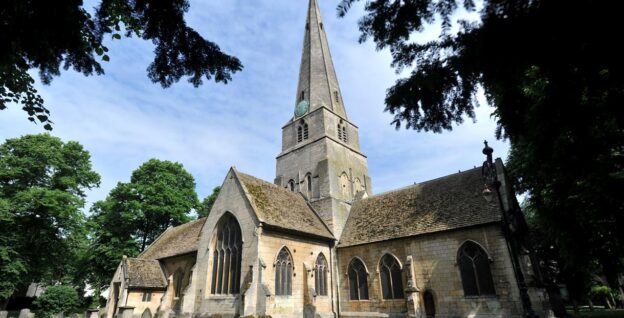Second in my short articles on the history of Cheltenham. Learn about Cheltenham in the Medieval Period.
Medieval Period
Early Beginnings:
Cheltenham’s origins in the medieval era are rooted in its establishment as a small, rural village. The surrounding fertile lands made it conducive for agricultural practices, which likely constituted the primary occupation of its early inhabitants.
Domesday Book (1086):
Cheltenham’s first historical mention comes from the Domesday Book of 1086, commissioned by William the Conqueror to assess the value of English lands for tax purposes. In this record, Cheltenham (referred to as “Chintenha(m)”) is described as a manor, which had land for six ploughs, a mill, and a value of 24 shillings.

The entry indicates that Cheltenham was of moderate size for the period, with an established community and resources that contributed to its value. The Domesday record also indicates that the manor of Cheltenham was held by a certain “Osbern Giffard,” suggesting the presence of a local lord or landowner.
Growth and Development:

Throughout the medieval period, Cheltenham gradually expanded. The establishment of St. Mary’s Church, an early parish church, in the 12th century became a focal point for the community. Over the centuries, this church underwent several renovations, reflecting the town’s growth and changing architectural styles.
The presence of a church also points to the spiritual significance of the location and its role as a center for local gatherings, ceremonies, and celebrations.
Economic Activities:
While agriculture remained a cornerstone of Cheltenham’s economy, there’s evidence to suggest that the town also engaged in trade. Its location, close to other prominent settlements and well-traveled routes, would have facilitated commerce. Market rights might have been granted in the later medieval period, allowing the town to host regular markets, which would have boosted local trade.
Challenges and Struggles:
Like many settlements during the medieval period, Cheltenham would have faced its share of challenges. Famines, diseases (like the Black Death in the 14th century), and possibly regional conflicts could have affected its growth and prosperity.
Conclusion:
The medieval period was foundational for Cheltenham. From its early mention in the Domesday Book, the town experienced gradual growth, both in terms of its physical size and economic activities. The establishment of key institutions, like St. Mary’s Church, laid the groundwork for Cheltenham’s later significance in English history. As the centuries progressed, this once-small village would evolve into a bustling town, renowned for its spa waters and Regency architecture. But it was during these medieval times that the seeds for such growth were first sown.
